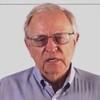Explore all the information on
Poultry nutrition - Other additives
Alternative feed additives have promising importance in broiler production due to the ban on the use of certain antibiotics. The most used antibiotic alternatives in broiler production are phytogenics, organic acids, prebiotics, probiotics, enzymes, and their derivatives. Antibiotic alternatives have been reported to increase feed intake, stimulate digestion, improve feed efficiency, increase growth performance, and reduce the incidence of diseases by modulating the intestinal microbiota and immune system, inhibiting pathogens, and improving intestinal integrity. Simply, the gut microbiota is the target to raise the health benefits and growth-promoting effects of feed additives on broilers. Therefore, naturally available feed additives are promising antibiotic alternatives for broilers.
Betaine (tri-methyl glycine) is a methyl donor which supplies the methyl groups for methionine production. It therefore may be able to support higher levels of growth in diets based on vegetable protein sources, which tend to be deficient in glycine and serine. There is evidence that betaine can improve nutrient digestibility by supporting intestinal function and growth (Eklund et al., 2005) Betaine is an osmoprotectant and commonly used to overcome...
Comments : 0
Recommendations: 0
Reducing stress in poultry remains a topic of concern with producers and scientists alike. Poultry production efficiency is adversely affected by high ambient temperatures and humidity. As the birds' body temperatures rise, feed consumption, growth rate, feed efficiency, survivability, egg shell and chick quality decline. The problem is particularly severe as the ambient temperature rises since heat loss associated with non-evaporative cooling (heat lost through...
Comments : 20
Recommendations: 0
Introduction In Nigeria, the high cost of poultry feed and competition for feed raw materials between farm animals and human has increased the search by nutritionists and researchers for alternative sources. Melon husks are agricultural by-product or wastes that are usually discarded or burnt after removal of the melon seeds (Citrullus vulgaris). Melon is a cucurbit crop belonging to the family cucurbitaceae (Abiodun and...
Comments : 1
Recommendations: 0
1. Introduction The poultry industry has become an important economic activity in many countries. In large-scale rearing facilities, where poultry are exposed to stressful conditions, problems related to diseases and deterioration of environmental conditions often occur and result in serious economic losses. Prevention and control of diseases have led during recent decades to a substantial increase in the use of veterinary medicines. However, the...
Comments : 6
Recommendations: 0
...
Comments : 1
Recommendations: 0


Dietary starch influences growth performance, nutrient utilisation and digestive dynamics of protein and amino acids in broiler chickens offered low-protein diets
Suggested link
...
Comments : 0
Recommendations: 0
Presentation done at the EAAP Scientific Congress – August 2013 Gordon Rosen is a scientist who has established a model made up of 7 criteria in order to objectively evaluate the efficiency of feed additives on animals’ performance (2004). The following table compares the data obtained with B-SAFE in poultry to the data expected by ROSEN for the 7...
Comments : 0
Recommendations: 0


An impact of Deoxynivalenol produced by Fusarium graminearum on broiler chickens
Suggested link
...
Comments : 0
Recommendations: 0
...
Comments : 0
Recommendations: 0
INTRODUCTION Breeder nutrition is most often evaluated in terms of egg numbers and hatchability, with relatively scant regard to broiler performance. Within an integrated broiler operation, it is of course broiler growth characteristics that have the greatest impact on economics of poultry meat production, yet there is often disconnect between breeder and broiler nutrition. To some extent, this situation arises due to the physical separation of...
Comments : 3
Recommendations: 1
Azadirachta Indica is a hardy plant from the family Milliaceae. It is popularly known as Neem tree and is native of India and Burma, and is adapted favorably to areas with severe drought, poor, shallow and even saline soil (Ogbuewu et al. (2011b). The utilization of several leaf meals as feed ingredient to reduce production cost in poultry diet is not new but the inclusion levels at various ages and physiological conditions varies (D’Mello and...
Comments : 2
Recommendations: 0
Summary A feeding study was conducted to compare the effects of litter material, dietary fibre and sex on growth performance, organ development, mucosal morphometry and gut microbial communities in broilers. Seven hundred twenty day old Cobb chicks were allocated to 24 floor pens in a 2 x 2 x 2 factorial design with 3 pens of 30 birds per replicate (3 pens of males and 3 pens of females). Factors were: litter material, paper or hardwood shavings; dietary fibre,...
Comments : 3
Recommendations: 0
Summary A trial was conducted to test the following hypothesis; broiler exposure to coarse insoluble fibre in the diet or litter will result in enhanced gizzard function and performance, improved adaptability to an intermittent feeding program and an increase in the occurrence of reverse peristalsis. Ross 308 broiler chickens were either intermittent or ad libitum fed a basal diet, a basal diet diluted with 15 % coarse hulls (barley and oats) or a basal diet...
Comments : 10
Recommendations: 0
Mingan Choct, CRC Poultry CEO, gave two lectures at IV CLANA 2010, Brazil and talked to Engormix.com about Net Energy and Feed Enzyme in Poultry Nutrition....
Comments : 6
Recommendations: 0
A study was conducted to evaluate effect of high levels of corn DDGS and rye on growth performance and gut health of broilers as influenced by a nonstarch polysaccharides (NSP) degrading enzymes blend (CIBENZA ® CSM, Novus International, Inc.). The study consisted of 8 treatments: corn soy control, 30% DDGS, 16% corn bran, 38% rye, 38% rye plus enzyme, 25% rye, 25% rye 30% DDGS, and 25% rye 30% DDGS plus enzyme. Corn bran...
Comments : 0
Recommendations: 0
One battery study was conducted to evaluate effect of a synthetic 1:1 thymol carvacrol blend (NEXT ENHANCE® 150) on growth performance and gut health of broilers fed rye wheat based diet and challenged with mixed species of Eimeria on day 0. A rye wheat and soybean meal based diet was formulated to meet or exceed nutrient requirements of broilers. To this basal diet, the essential oil blend was added at 0, 30, 60, or 120...
Comments : 0
Recommendations: 0
Introduction Intestinal colonization and shedding of pathogenic bacteria in animal feces is an important issue in both human food safety and animal health. Animal feed due to its composition provides a favorable environment for the growth of various microorganisms. Microorganisms found in feedstuffs can be saprophytic, pathogenic, conditionally pathogenic and toxic. Their proliferation and growth in the feed depends on...
Comments : 20
Recommendations: 2
Sir /Mam
This is for introducing you to a 100% plant obtained protein source which is a superb and economical partial replacement of soyabean meal in all poultry and livestock feed. This source is called Roasted Guar Korma, obtained from a crop called Guar. This product has been roasted to permanently deactivate the trypsin inhibitor activity. Following are Roasted Guar Korma attributes:- Moisture 4.5-5.5 % Crude Protein 50-54 % Total Energy 3600 Kcal/Kg...
Comments : 0
Recommendations: 0
Introduction The impact of gastrointestinal disease ranges from erosive to catastrophic, and considerable time, effort and financial resources are devoted to limiting the risk and consequence of disease challenge. Intense breeding and selection programmes have provided birds with the genetic potential to perform in the face of disease challenge, while good biosecurity has reduced the risk and consequence of infectious disease. At the...
Comments : 10
Recommendations: 0

.jpg&w=3840&q=75)


.jpg&w=3840&q=75)



















